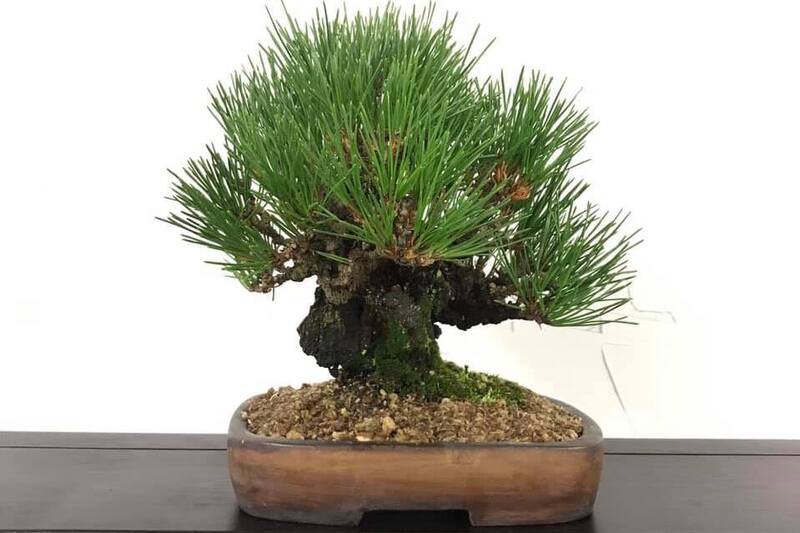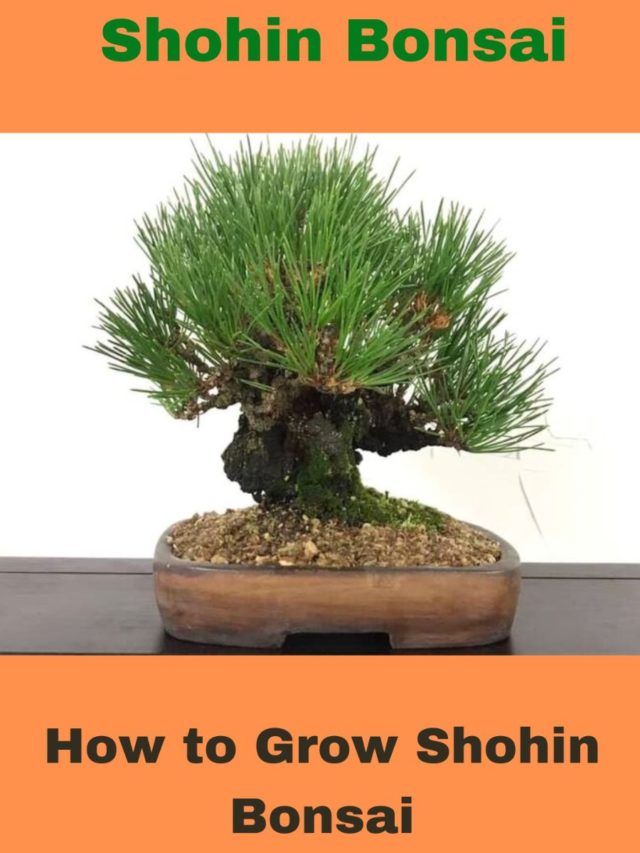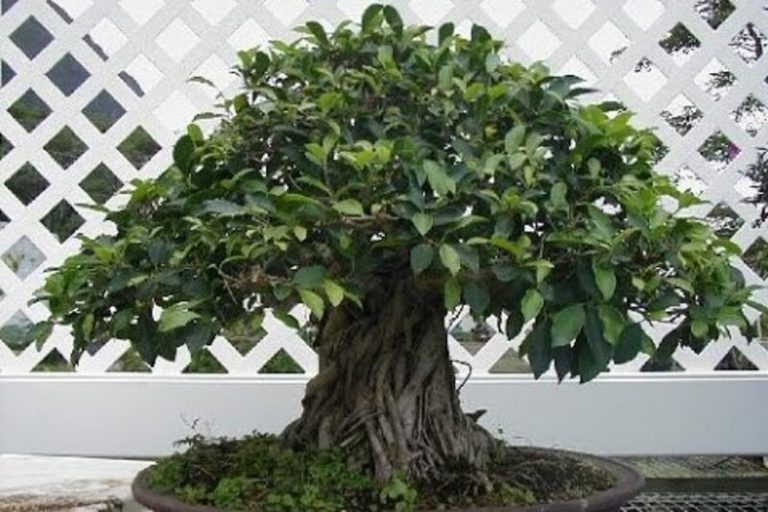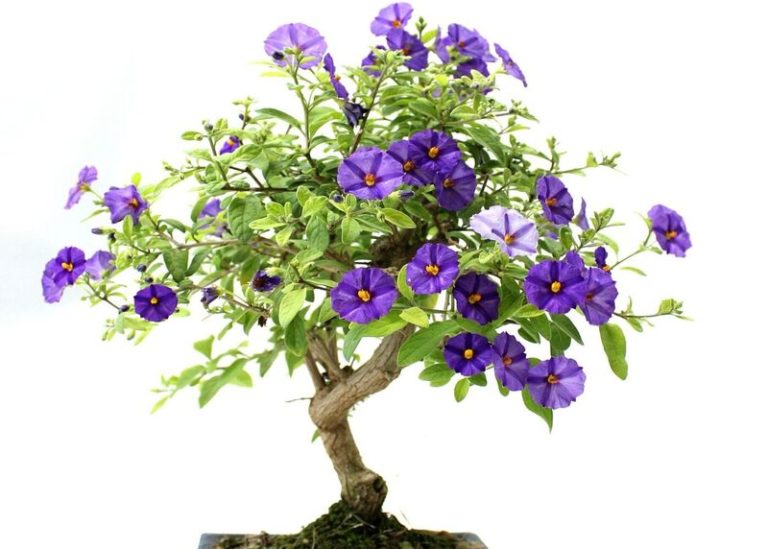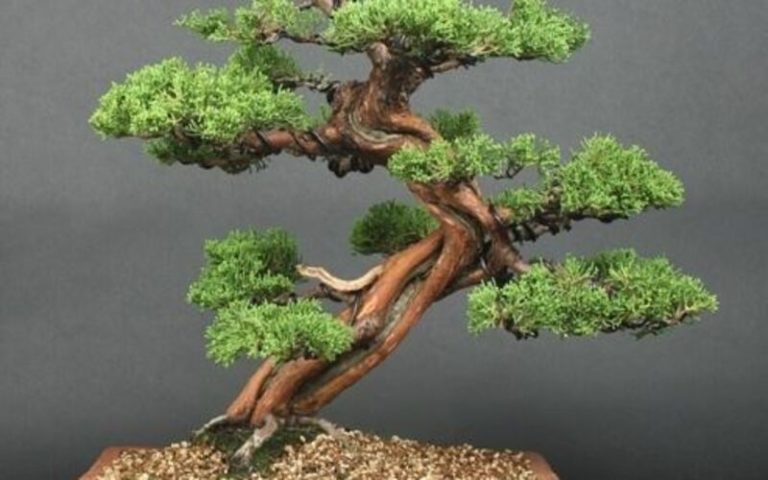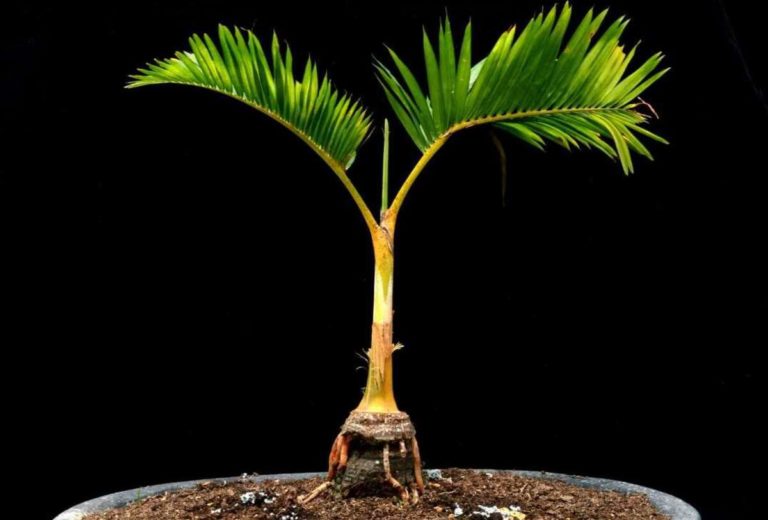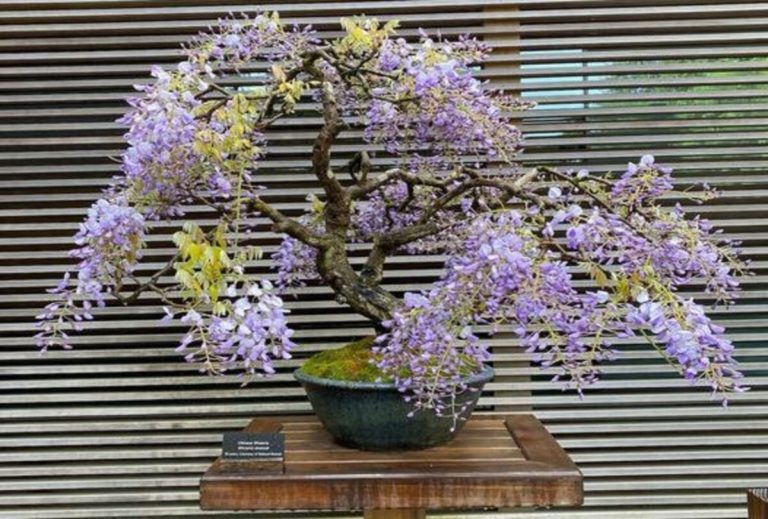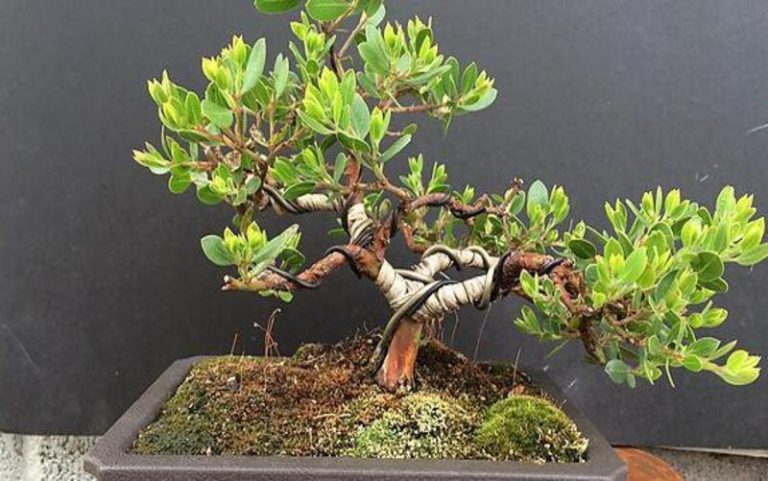Shohin Bonsai: The Perfect Hobby for Busy People Looking for a Little Zen in Their Lives
Shohin bonsai is a special kind of bonsai tree that is smaller than other types of bonsai. Those who don’t have a lot of outside space or who want to appreciate nature in a little way will find this activity to be ideal because of this feature. The term “little item” originates from Japan and is translated as “shohin.”
Shohin bonsai has a long history of popularity in Japan and is renowned for its exquisite and detailed patterns. Shohin bonsai trees are often no higher than 20cm and may be placed on a table or stand, unlike conventional bonsai can be fairly enormous and require a lot of room.
Types of Shohin Bonsai
There are many different types of shohin bonsai that you can grow. Here are a few examples:
Juniper: Because of its authentic and rugged look, juniper trees are often used for shohin bonsai. They require little maintenance and can be molded into almost any form.
Maple: Maple trees are known for their vibrant fall foliage and are a popular choice for shohin bonsai. They can be trained to grow in many different shapes and are perfect for creating a unique and eye-catching display.
Pine: Pine trees are a popular choice for bonsai and also work well for shohin bonsai. They have a distinct look and may be coached to grow in a variety of ways. Pine trees also have a long lifespan, so you may enjoy your shohin bonsai for a long time.
Azalea: Azalea trees are popular for shohin bonsai because of their bright and fragrant blossoms. They need a little more attention than other forms of shohin bonsai, but the rewards are well worth it.
Cherry Blossom: Cherry blossom trees are a symbol of spring and are known for their beautiful pink flowers. They are a popular choice for shohin bonsai and can be trained to grow in many different shapes.
These are only a few examples of shohin bonsai that may be grown. The type of tree you select will be determined by your own tastes as well as the growth circumstances in your location. Every variety of shohin bonsai, with the proper care and attention, may be a lovely addition to your home or garden.
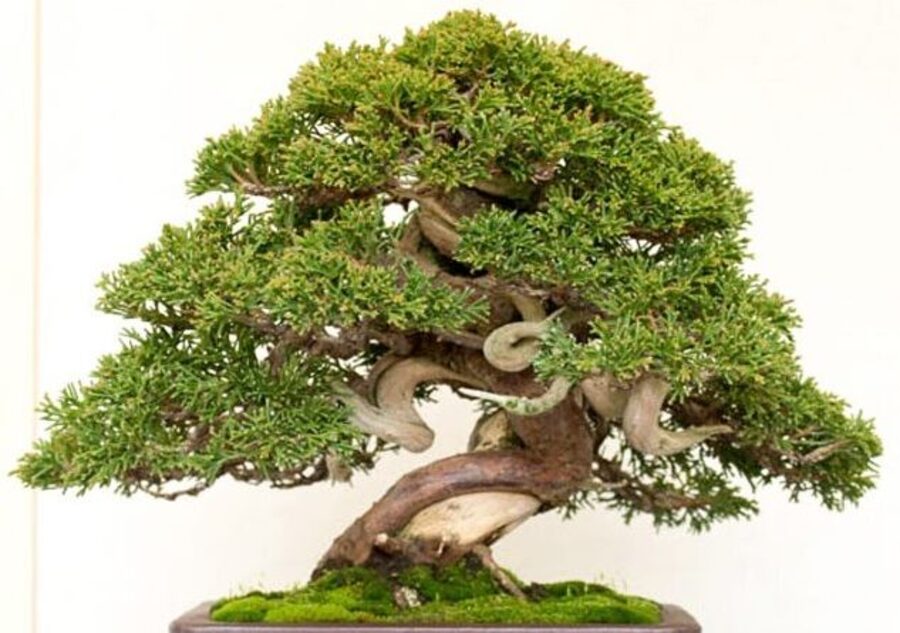
Characteristics of Shohin Bonsai
Shohin bonsai has several unique characteristics that set it apart from other types of bonsai. Here are a few:
- Small size: Shohin bonsai is defined by its small size, typically no taller than 20cm. This makes it perfect for people who live in apartments or who don’t have a lot of outdoor space.
- Intricate design: Despite its small size, shohin bonsai can be very intricate and detailed. Many shohin bonsai trees are trained to grow in unique and interesting shapes, making them a beautiful and captivating addition to any space.
- Less maintenance: Shohin bonsai require less upkeep than other kinds of bonsai. They require less water and fertilizer, and their compact size makes them easier to trim and care for.
- Portable: Shohin bonsai trees are readily transferred from one site to another due to their modest stature. This makes them ideal for persons who wish to modify the arrangement of their living space on a regular basis or who want to take their bonsai on excursions.
- Versatility: Shohin bonsai trees include juniper, maple, pine, azalea, and cherry blossom. This provides farmers with several possibilities for selecting a tree that matches their unique style and taste.
These are only a handful of the qualities that distinguish shohin bonsai. Shohin bonsai may be the ideal alternative for you if you want a beautiful and low-maintenance approach to appreciate nature in a tiny area.
How to Grow Shohin Bonsai
Growing shohin bonsai takes a lot of attention and work, but it can be quite rewarding. The following are the fundamental stages for cultivating a shohin bonsai:
Choose the right tree: Shohin bonsai can be made from many different types of trees. Choose a tree that is suitable for your climate and growing conditions. It’s important to choose a young tree that is still flexible and can be trained to grow in the desired shape.
Choose the right pot: Choose a small pot that is appropriate for the size of your shohin bonsai. The pot should be shallow and have drainage holes to prevent water from accumulating in the soil.
Soil mixture: Use a soil mixture that is well-draining and has good water retention. A mixture of Akadama, pumice, and lava rock is often used for shohin bonsai.
Pruning the tree: Prune the tree regularly to shape it and encourage new growth. Cut back any branches that are growing too long, and remove any dead or damaged leaves.
Watering: Water the tree regularly, but avoid over-watering. The soil should be kept moist but not saturated. Water the tree thoroughly and let the excess water drain out of the pot.
Fertilizing: Throughout the growing season, fertilize the tree on a regular basis with a balanced fertilizer suited for the sort of tree you’re cultivating.
Repotting: Repot the tree every two to three years or when it has outgrown its pot. This will help keep the tree healthy and encourage new growth.
Training: Train the tree to grow in the desired shape using wire or other training tools. Be patient, as it can take several years to achieve the desired shape.
You may successfully cultivate a shohin bonsai by following these simple instructions. Remember to be patient and enjoy watching your tree grow and evolve over time.
Benefits of Shohin Bonsai
Shohin bonsai is more than just a pretty addition to your home or garden; it also has many other benefits. Here are a few of the benefits of growing shohin bonsai:
- Stress relief: The cultivation and maintenance of shohin bonsai may be a calming and peaceful hobby. It can aid in stress reduction and mood enhancement.
- Improved air quality: Like with other plants, shohin bonsai contribute to the improvement of air quality by eliminating toxic substances and creating oxygen. This can enhance your health and well-being overall.
- Creativity: When you grow shohin bonsai, you can show off your creativity by shaping and training the tree to grow in interesting and unique ways. It can be a fun and rewarding creative outlet.
- Low maintenance: Shohin bonsai are a wonderful alternative for persons who like to enjoy the benefits of bonsai cultivation but do not wish to devote a great deal of work to their care. This is due to the fact that Shohin bonsai require less care than other varieties.
- Education: Growing shohin bonsai can be a great learning experience, teaching you about the natural world and the unique characteristics of different types of trees.
These are only a few of the advantages of growing shohin bonsai. Shohin bonsai has something for everyone, whether you’re seeking for stress reduction, a creative outlet, or simply a lovely addition to your house.
Displaying Shohin Bonsai
Putting shohin bonsai on display is an important part of appreciating their beauty and making your home or garden feel calm and peaceful. Here are some tips for displaying shohin bonsai:
Choose an appropriate location: Pick a site that is well-lit but not exposed to prolonged periods of direct sunshine. A position with sufficient airflow is also essential.
Use an appropriate display stand: Use a display stand that compliments and enhances the beauty of the bonsai. The bonsai’s stand should be built of a material that is adequate for its size and weight.
Consider the season: Season should be considered while showing shohin bonsai. In the spring, you may choose to show bonsai with vibrant blooms, but in the fall, it may be more appropriate to display bonsai with lovely leaves.
Choose complementary accessories: Use rocks, moss, and small figurines that go with the display to make it look more beautiful and peaceful.
Rotate the display: Every few weeks, rotate the bonsai display to make sure that all sides of the tree get enough light and air.
Avoid overcrowding: Avoid overcrowding the display with too many bonsai or accessories. Keep it simple and elegant.
Protect from pets and children: Keep the display out of reach of pets and children to avoid accidental damage to the tree or the display.
By following these tips, you can create a beautiful and serene display for your shohin bonsai that will enhance the beauty of your home or garden.
How to Care for and Maintain Shohin Bonsai
Shohin bonsai must be cared for and kept up in order to stay healthy and beautiful. Here are some tips for caring for and maintaining your shohin bonsai:
- Watering: Regularly water the tree, but prevent overwatering. Assess the amount of soil moisture by putting a finger up to the second knuckle into the soil. If the soil seems dry, the tree should be watered. Water well and allow excess water to drain from the container.
- Fertilizing: Fertilize the tree periodically during the growing season using a balanced fertilizer suited to the type of tree you are cultivating. Follow the manufacturer’s application and frequency directions.
- Pruning: Prune the tree regularly to shape it and encourage new growth. Cut back any branches that are growing too long, and remove any dead or damaged leaves. Be sure to use sharp and clean tools to avoid damaging the tree.
- Repotting: Repot the tree every two to three years, or when it has outgrown its pot. This will help keep the tree healthy and encourage new growth. Use a well-draining soil mixture and a pot that is slightly larger than the previous one.
- Sunlight: Shohin bonsai require sufficient sunshine for growth. Put the tree in a bright, well-lit place, but avoid exposing it to prolonged periods of direct sunshine, since this might harm the tree.
- Temperature: Shohin bonsai prefer temperatures between 15 and 25°C but can tolerate slightly cooler temperatures during the winter months. Avoid exposing the tree to extreme temperatures, drafts, or sudden temperature changes.
- Pest control: Examine the tree on a regular basis for pests including spider mites, aphids, and scale insects. Infestations should be treated as soon as possible with a suitable pesticide or by physically eliminating the bugs.
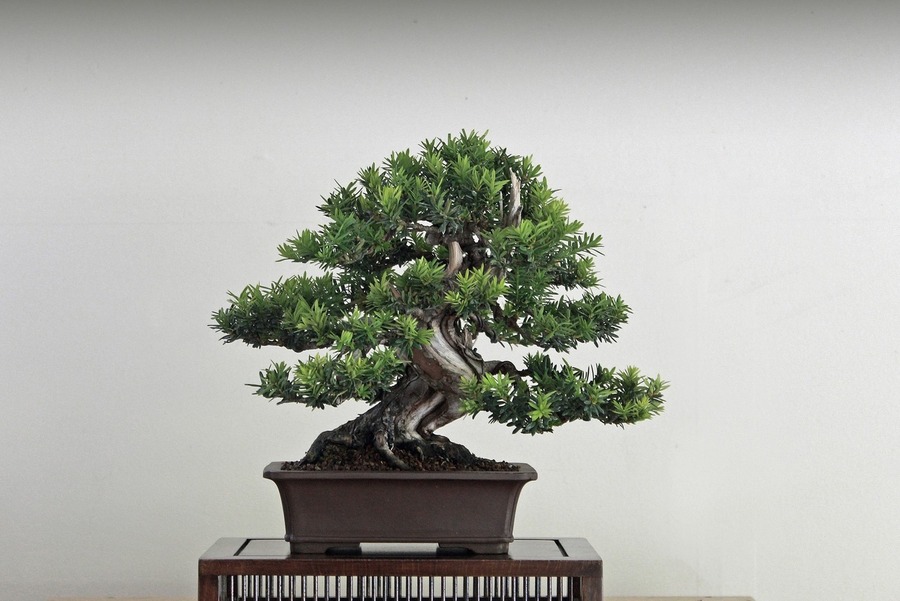
Shohin Bonsai Care Sheet
| Aspect | Care Tips |
| Watering | Avoid overwatering. Assess soil moisture with a finger to the second knuckle. Water and drain the pot. |
| Fertilizing | Throughout the growth season, fertilize using a balanced tree-specific fertilizer. Follow manufacturer’s application and frequency directions. |
| Pruning | Regular pruning shapes the tree and promotes development. Remove dead leaves and trim long branches. Avoid tree damage with sharp, clean instruments. |
| Repotting | Repot every 2–3 years or when the tree outgrows its container. Utilize well-draining soil and a bigger container. |
| Sunlight | Keep the tree in a bright, well-lit area, but avoid direct sunlight. |
| Temperature | Like 15-25°C, but can handle colder winter conditions. Prevent high temperatures, drafts, and rapid fluctuations. |
| Pest control | Check for spider mites, aphids, and scale insects. Use pesticide or eliminate bugs immediately. |
You can maintain your shohin bonsai healthy and beautiful for years by following these suggestions. Remember to be patient and have fun when caring for and maintaining your bonsai.
Conclusion
By adhering to these guidelines, you may preserve the health and beauty of your shohin bonsai for many years. Remember to be patient and to appreciate the care and maintenance of your bonsai.
FAQ:
Q: What is shohin bonsai?
A: Shohin bonsai is a kind of bonsai that emphasizes the creation of little trees no taller than 20 cm. The purpose of growing and training these miniature trees is to provide a natural and harmonious portrayal of nature in a small space.
Q: What types of trees are suitable for shohin bonsai?
A: Maples, pines, junipers, and blooming trees like as azaleas and camellias are all suited for shohin bonsai. The most significant consideration is selecting a tree that is small enough for the size of the container and suited for the local growth conditions.
Q: How do I care for my shohin bonsai?
A: A shohin bonsai requires routine watering, fertilization, trimming, and repotting. You should also set your bonsai in a well-lit area, but not in prolonged exposure to direct sunlight. It is essential to select a soil mixture that is well-draining and suited to the sort of tree you have.
Q: How often should I water my shohin bonsai?
A: You should water your shohin bonsai regularly, but avoid over-watering. Check the soil moisture level by inserting a finger up to the second knuckle. Water thoroughly and let excess water drain out of the pot.
Q: Can I display my shohin bonsai indoors?
A: Yes, shohin bonsai can be displayed indoors as long as they are placed in a well-lit area with good air circulation. Avoid placing them in direct sunlight for extended periods of time and protect them from extreme temperatures and drafts.
Q: How often should I fertilize my shohin bonsai?
A: You should fertilize your shohin bonsai regularly during the growing season with a balanced fertilizer appropriate for the type of tree. Follow the manufacturer’s instructions for application and frequency.
Q: Can I create my own shohin bonsai?
A: Yes, you can create your own shohin bonsai by starting with a small tree or seedling.
Also Read:
Trident Maple Bonsai: The Perfect Gift for the Green Thumb in Your Life

